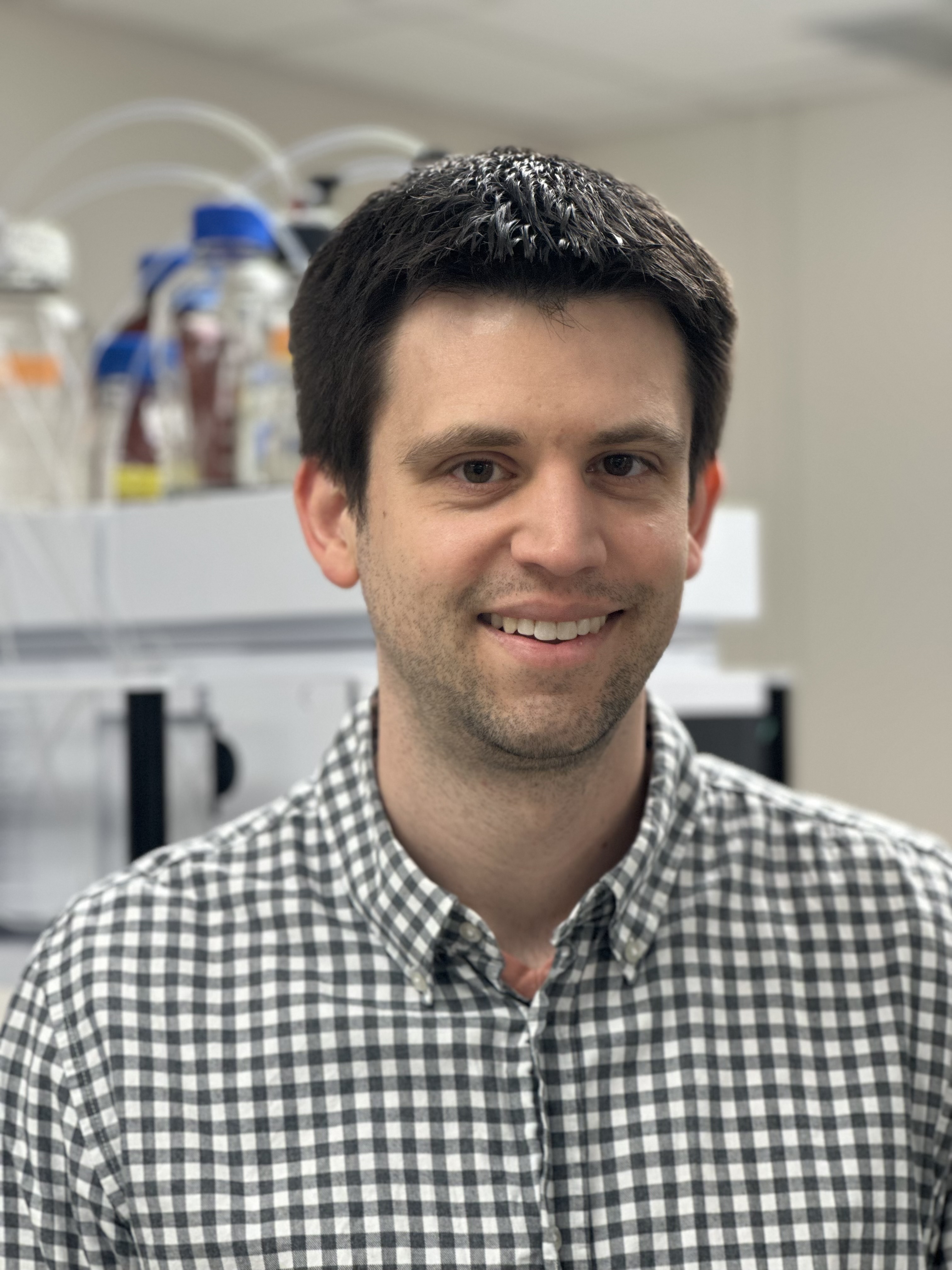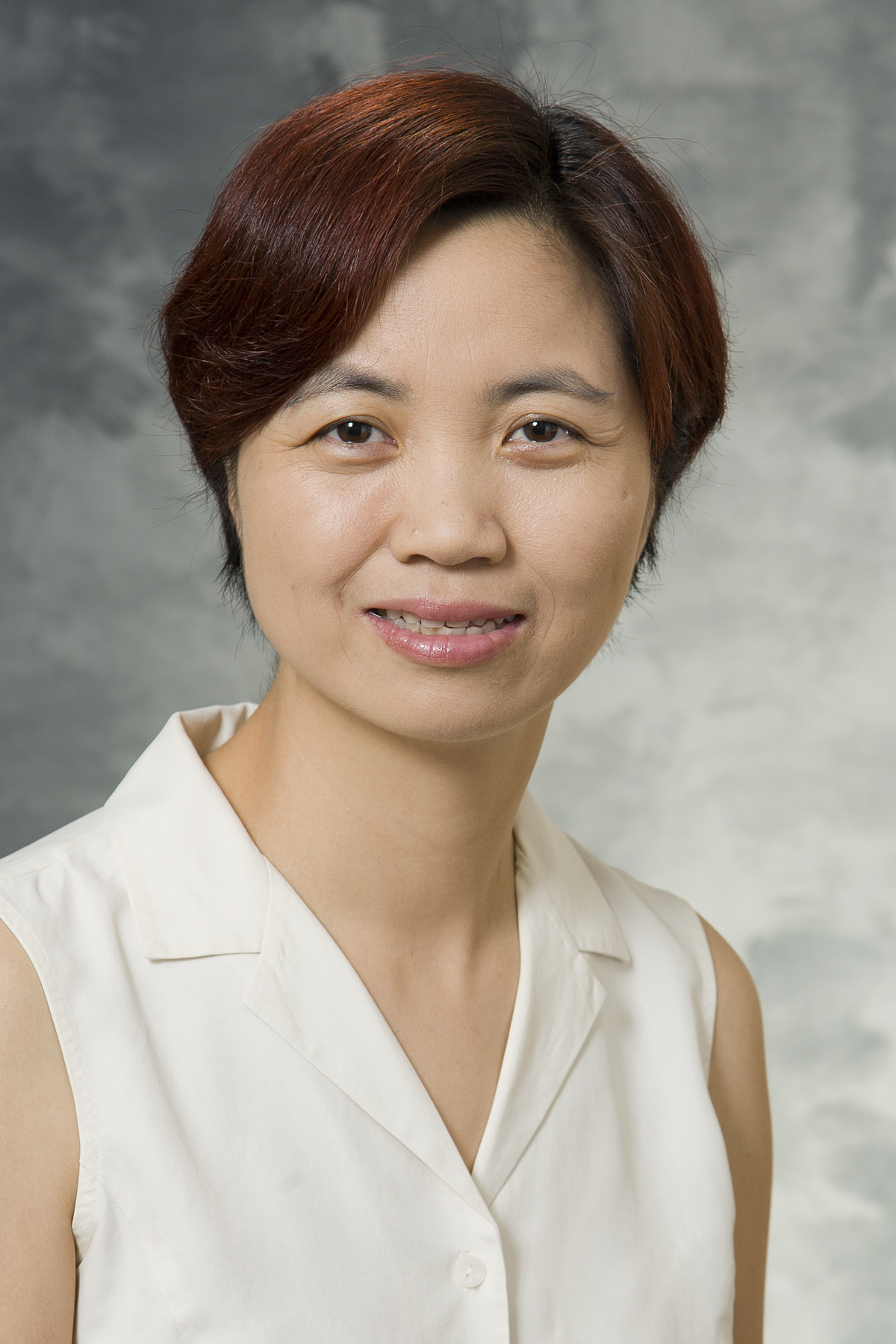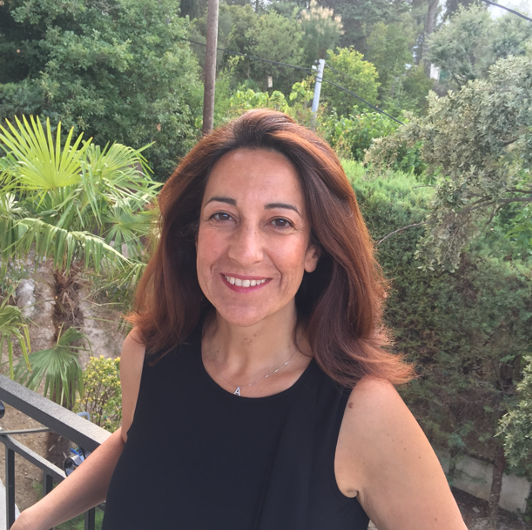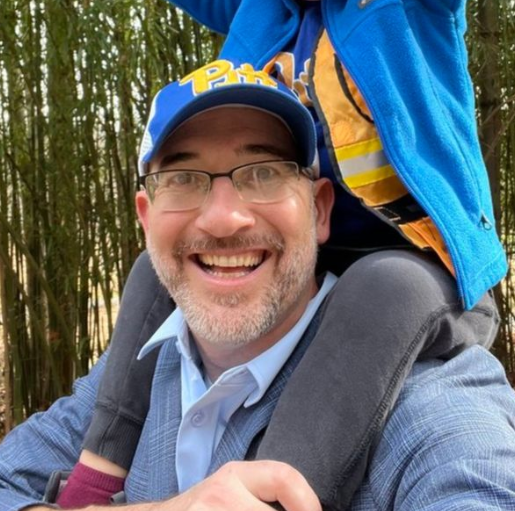Agenda
Saturday, February 21
| 8:00 AM - 9:00 AM | |
| 9:00 AM - 4:00 PM | |
| 2:30 PM - 6:00 PM |
Sunday, February 22
| 8:00 AM - 7:00 PM | |
| 9:00 AM - 12:00 PM | |
| 9:00 AM - 4:00 PM | |
| 4:00 PM - 4:30 PM | |
| 4:30 PM - 5:45 PM | |
| 6:00 PM - 7:00 PM | |
| 7:00 PM - 8:30 PM |
Monday, February 23
| 7:00 AM - 6:00 PM | |
| 8:30 AM - 9:05 AM | |
| 9:15 AM - 10:35 AM | |
| 10:35 AM - 11:00 AM | |
| 11:00 AM - 12:20 PM | |
| 1:40 PM - 3:00 PM | |
| 3:15 PM - 4:30 PM | |
| 4:30 PM - 6:30 PM |
Tuesday, February 24
| 7:00 AM - 6:00 PM | |
| 8:30 AM - 9:05 AM | |
| 9:15 AM - 10:35 AM | |
| 10:35 AM - 11:00 AM | |
| 11:00 AM - 12:20 PM | |
| 1:40 PM - 3:00 PM | |
| 3:15 PM - 4:30 PM | |
| 4:30 PM - 6:30 PM |
Wednesday, February 25
| 7:00 AM - 11:00 AM | |
| 8:30 AM - 9:05 AM | |
| 9:15 AM - 10:35 AM | |
| 10:35 AM - 11:00 AM | |
| 11:00 AM - 1:00 PM |
Saturday, February 21
| 8:00 AM - 9:00 AM - Registration | |||
Saturday Short Course Registration |
|||
| 9:00 AM - 4:00 PM - Short Course | |||
Introduction to Machine Learning and Artificial Intelligence for Proteomics Data AnalysisMachine learning-and correspondingly, artificial intelligence-has become a dominant technology for data-intensive discovery in nearly all scientific domains. Today, almost all biomedical research employs machine learning techniques to derive new knowledge from complex biological data. This course will introduce the fundamentals of machine learning with a specific focus on the analysis of proteomics data, through a series of lectures and hands-on labs. The primary goal of this course is to promote data literacy for people new to machine learning. Students who complete the course will be equipped to critically evaluate uses of machine learning in scientific literature, recognize common pitfalls, perform basic machine learning analyses, and know when to consult a machine learning expert-and how to communicate with them. The topics that will be covered include: - What is machine learning? - Types of machine learning tasks - The bias-variance trade-off - Machine learning model evaluation - Linear models and logistic regression - Decision tree-based models - Neural networks and artificial intelligence Course participants will: - Recognize when machine learning methods may be beneficial for their research. - Identify common pitfalls in the application of machine learning methods. - Gain confidence to provide constructive feedback for applications of machine learning in the manuscripts they review. - Evaluate the strengths and weaknesses of machine learning approaches presented in the scientific literature. - Gain familiarity with additional resources to deepen their understanding of machine learning. Prerequisites: All participants will need to bring a laptop to perform the lab exercises during the course. A familiarity with proteomics data analysis is recommended. No machine learning experience is needed. No programming experience is necessary; however, some programming experience in any language is recommended and we will introduce Python as part of the course. Presented By:
|
|||
Top-Down For the MassesThe goal of this course is for you to gain the ability to produce and interpret publishable (ideally world-class), deep sequence coverage, Top-Down Mass Spectrometry (TDMS) data. All learners, including current TDMS practitioners, will learn recent advances in internal fragmentation assignment that avoid pervasive false-positive and false-negative assignments and often improve sequence coverage by an order of magnitude. This course has the following learning objectives: 1) Recognize problems well-suited for TDMS. 2) Design and perform TDMS experiments best suited for your particular sample, scientific question, and instrumentation. You will improve mastery using problem sets where you design sample preparation, fractionation, and MS methods best suited for particular preparations and scientific problems. This marks the end of morning session. 3) Interpret TDMS data, including internal fragments, manually and using free software (bring a Windows based computer if you can). 4) Evaluate your interpretation skills and improve them as needed. Here you will be given spectra to interpret, enough time to enjoy the experience, and will then compare your work to "gold-standard" analysis validated by established TDMS laboratories. 5) Avoid common pitfalls in TDMS experiments and data analysis. For those new to TDMS or even MS, basic spectral interpretation skills and MS operational principles will be taught briefly. If you're uncertain of being adequately prepared but are dedicated to becoming so, online introductory tutorials in spectral interpretation and instrumentation will provided in advance. Presented By:
|
|||
Quantitative Data Analysis for Proteomics - Part 1This course will cover both theory and practice for analyzing quantitative proteomics data. The course will be a mixture of both "lecture" and "lab" portions. The "lectures" will discuss best practices, considerations, and pitfalls for interpreting label-free and labeled measurements, including those produced by DDA, DIA, PRM, TMT/iTRAQ, and SILAC methods. The "labs" will give students a chance to explore and analyze raw data from different instrument platforms with open-source tools using Windows laptops that they either bring with them or have remote access to. While participants are highly recommended to bring their own computers to get the full experience, participants without Windows laptops will be able to join up as teams to analyze datasets. The goal of this course is to give students a foundation for how data analysis tools work and to build an intuition for what data analysis challenges lurk in their datasets. A portion of the class will be devoted to "office hours" where students will get a chance to discuss their specific quantitative proteomics challenges. Audience: proteomics researchers at all levels that want to learn what common proteomics data analysis tools/methods are doing, how they work, and where they break down. Presented By:
|
|||
| 2:30 PM - 6:00 PM - Board Meeting | |||
Board Meeting |
|||
Sunday, February 22
| 8:00 AM - 7:00 PM - Registration | |||||||
Registration and Information Desk |
|||||||
| 9:00 AM - 12:00 PM - Short Course | |||||||
Single Cell to Spatial ProteomicsThe purpose of this half day course is to gain fundamental knowledge on state-of-the-art single cell to spatialomics proteomic practices, enable discussion on the reality of single cell to spatialomics practices, and build a scholarly support network for proteomic research. The course will be taught in three case studies spanning single cell proteomics by LC-MS/MS, combining proteomics with other 'omic workflows, and leveraging spatial proteomics for studies on the tissue microenvironment. Lectures by leading scientists will present case studies on single cell to spatialomics with discussion and perspectives to include: - Considerations for sample storage and preparation - Deployment of internal standards - Proteomic analysis strategies: Instrumentation and data analysis - Multiomic capabilities: Integrating with current workflows The workshop is for researchers within the proteomic community who wish to update or inform themselves on current trends in single cell to spatial proteomics. Study Topics and Lecturers: - Discovery of Novel Cell Phenotypes Using Single Cell Proteomics: A Case Study on Aortic Aneurysm. Discussion led by Sarah Jessica Parker, Cedars Sinai. This case study focuses on a step-by-step discussion of single sample preparation to data analysis and integration with spatial proteomics. - Deploying Multiomic Analysis with Proteomics Approaches: Studies on Aging, Osteoarthritis, and Age-Related Diseases. Discussion led by Birgit Schilling, Buck Institute. The lecture focuses on studies integrating multiomic workflows with existing proteomic and spatial proteomic workflows. - Implementing Multiomic Studies for Spatial Pathology from One of a Kind Clinically Archived Breast Cancer Tissues. Discussion led by Peggi Angel, Medical University of South Carolina. The lecture focuses leveraging multiomic workflows targeting glycomics, extracellular, and cellular proteomics on single tissue sections. Presented By:
|
|||||||
| 9:00 AM - 4:00 PM - Short Course | |||||||
LC-MS 101: Everything You Ever Wanted to Know But Were Afraid to AskMost proteomics measurements utilize liquid chromatography separations coupled with high resolution/mass accuracy mass spectrometry. With these technologies maturing, it becomes possible to collect data while treating the LC-MS platform as a black box, not fully understanding what's going on inside. This practical lecture-style short course will be divided into three topics: separations, ionization and mass measurement. The separations portion will delve into the basics of LC separations, primarily focusing on reversed phase LC but also briefly touching on other modes. We will discuss sample loading and injection strategies, column dimensions, throughput and flow rate considerations. We will utilize some common free software tools to optimize our separations within the constraints of specific instrument capabilities, and students will be invited to follow along with these software tools on their own as desired. We will then describe electrospray ionization and practical considerations to increase robustness, stability and sensitivity. For the mass spectrometry portion, we will describe the ion path and ion optics encountered in modern mass spectrometers, the (very) basics of mass spectrum interpretation and the mass analyzers commonly encountered in proteomics. The course will be highly interactive such that students will be able to get their own questions answered. The target audience is users of LC-MS-based proteomics technologies who either need a refresher or who have never had formal instruction on the use of the instrumentation. Presented By:
|
|||||||
Quantitative Data Analysis for Proteomics - Part 2This course will cover both theory and practice for analyzing quantitative proteomics data. The course will be a mixture of both "lecture" and "lab" portions. The "lectures" will discuss best practices, considerations, and pitfalls for interpreting label-free and labeled measurements, including those produced by DDA, DIA, PRM, TMT/iTRAQ, and SILAC methods. The "labs" will give students a chance to explore and analyze raw data from different instrument platforms with open-source tools using Windows laptops that they either bring with them or have remote access to. While participants are highly recommended to bring their own computers to get the full experience, participants without Windows laptops will be able to join up as teams to analyze datasets. The goal of this course is to give students a foundation for how data analysis tools work and to build an intuition for what data analysis challenges lurk in their datasets. A portion of the class will be devoted to "office hours" where students will get a chance to discuss their specific quantitative proteomics challenges. Audience: proteomics researchers at all levels that want to learn what common proteomics data analysis tools/methods are doing, how they work, and where they break down. Presented By:
|
|||||||
Capturing the Stable and Transient Protein-Protein InteractionsThis course will introduce various proteomics techniques for studying stable and transient protein-protein interactions, including affinity purification, proximity labeling, and cross-linking methods. The aim is to provide practical tips on study design, experimental optimization, data analysis, and troubleshooting for protein interaction studies. Protein interaction experiments are often challenged by nonspecific binding, experimental variability, contamination, false discoveries, and data analysis bottlenecks. This course will provide practical strategies to address these challenges and optimize experimental design. Instructors with expertise in affinity purification, proximity labeling, and cross-linking techniques will present real-life examples of problems, common pitfalls, and effective solutions. Through both successful and failed experimental examples, attendees will gain insight into best practices for refining protocols, improving data reliability, and overcoming computational hurdles. An interactive discussion session will also be included, giving attendees the opportunity to share their experience and challenges in protein interaction experiments. Presented By:
|
|||||||
| 4:00 PM - 4:30 PM - Break | |||||||
Break on Own |
|||||||
| 4:30 PM - 5:45 PM - Evening Workshops | |||||||
Evening Workshop: Targeting Diabetes and Obesity: MS-based Assays that Inform Clinical Research Transferability |
|||||||
Evening Workshop: Proteomics in (Bio)Pharma Industry Part 1This workshop aims to bridge the gap between proteomics research in academic and industrial settings, with a specific focus on the (bio)pharma industry. The workshop will consist of two parts. On day 1 Jan will highlight the unique features, challenges, and opportunities of conducting proteomics work in an industrial setting, where the focus is on delivering medicines for patients in need - while balancing risk, impact and timelines. The day 1 will start with a brief introduction to the drug discovery process, highlighting the three different stages - discovery, pre-clinical, and clinical phases - and how proteomics can play a role in each of them. The main part of the workshop will consist of facilitated discussions on two key topics. Firstly, the availability of opportunities for students to understand scientific work in industrial settings will be explored. Secondly, strategies for demonstrating the impact of proteomics in the (bio)pharma industry will be discussed. Presented By:
|
|||||||
| 6:00 PM - 7:00 PM - Plenary Session | |||||||
Opening Plenary SessionPresented By:
|
|||||||
| 7:00 PM - 8:30 PM - Welcome Reception | |||||||
Welcome Reception with Exhibitors |
|||||||
Monday, February 23
| 7:00 AM - 6:00 PM - Registration | |||||
Registration and Information Desk |
|||||
| 8:30 AM - 9:05 AM - Plenary Session | |||||
Donald F. Hunt Distinguished Contribution in Proteomics Award Plenary SessionAdventures in Quantitative ProteomicsOver the past two decades, the MacCoss laboratory has pursued the development of quantitative mass spectrometry methods that are accurate, reproducible, and accessible to the broader proteomics community. Our early work focused on stable isotope labeling strategies, which enabled comprehensive quantitative comparisons of protein abundance across biological conditions. These studies established principles for isotope-based quantification and demonstrated both the promise and challenges of achieving reproducible quantitative measurements in complex biological samples. Recognizing limitations in discovery proteomics for hypothesis-driven research, we focused on the development and application of targeted mass spectrometry approaches. This work emphasized selected reaction monitoring (SRM) and parallel reaction monitoring (PRM) methods that provide sensitive, specific, and reproducible quantification of predetermined protein targets. To make these methods broadly accessible, we developed Skyline, an open-source platform that supports vendor-neutral method development, data analysis, and result sharing. Skyline has become a cornerstone tool for the quantitative proteomics community, enabling laboratories worldwide to implement targeted proteomics workflows. Our laboratory was an early adoptor of data-independent acquisition (DIA) mass spectrometry. We were proponents of 'peptide-centric' analyses of proteomics data as an alternative to 'spectrum-centric' analysis and recognized the ability of DIA to combine the strengths of untargeted discovery methods with the quantitative reproducibility of targeted approaches. Our efforts have worked to improve the selectivitity and specificity of the methodology, minimize false discoveries, reduce challenges with missing data, and improved the visualization of the underlying extracted ion chromatograms of DIA data. Throughout these technical developments, we have maintained a strong emphasis on reproducibility and inter-laboratory harmonization. We established quality control strategies, developed standardized workflows, and created tools for comparing and harmonizing quantitative results across different laboratories, instruments, and experimental designs. Panorama, our web-based data repository, facilitates data sharing and collaborative quality assessment. These quantitative proteomics methods have been successfully applied to diverse biomedical questions spanning aging, cancer, cardiovascular disease, diabetes, and neurodegeneration, demonstrating their broad utility for advancing our understanding of human health and disease. Presented By:
|
|||||
| 9:15 AM - 10:35 AM - Parallel Sessions | |||||
Parallel Session 01: Cancer Proteomics
|
|||||
Parallel Session 02: Advances in Imaging / Spatial Proteomics
|
|||||
| 10:35 AM - 11:00 AM - Break | |||||
Coffee Break |
|||||
| 11:00 AM - 12:20 PM - Parallel Sessions | |||||
Parallel Session 03: Enabling Structural Biology with Proteomics
|
|||||
Parallel Session 04: Affinity Proteomics: Without Mass Spectrometry
|
|||||
| 1:40 PM - 3:00 PM - Parallel Sessions | |||||
Parallel Session 05: Proximity and Interaction Methods
|
|||||
Parallel Session 06: Cardiovascular and Pulmonary Disease Proteomics
|
|||||
| 3:15 PM - 4:30 PM - Lightning Session | |||||
Lightning Talks - Round 01 |
|||||
| 4:30 PM - 6:30 PM - Poster Session | |||||
Poster Session 01 and Exhibitor Viewing |
|||||
Tuesday, February 24
| 7:00 AM - 6:00 PM - Registration | |||||
Registration and Information Desk |
|||||
| 8:30 AM - 9:05 AM - Plenary Session | |||||
Robert J. Cotter New Investigator Award Plenary SessionPaving the Road to Translational Geroscience with ProteomicsNate will talk about the potential of proteomic approaches to bettering our understanding of aging biology, and the critical role it can (and should) play in the translation of biomarkers and therapeutic targets into humans. Most of his academic career has been spent at the intersection of MS proteomics and geroscience (the study of aging biology), driven by the support of mentors/colleagues and the determination and ingenuity trainees. Over this period, advancement in proteomic technologies and workflows have enabled a detailed molecular view of aging mechanisms and opened the door to new pathways to translation. For example, a fundamental connection between protein turnover and aging has been revealed by innovation in metabolic labeling workflows, particularly in computational pipelines. Additionally, advancements in serum proteomics and chemoproteomics have opened the door to clinical translation, including the emergence of increasingly specific and predictive senescence-associated circulating biomarkers. These are only a few examples that illustrate how the application of evolving proteomic technologies is a critical accelerant for the future of translational geroscience. Presented By:
|
|||||
| 9:15 AM - 10:35 AM - Parallel Sessions | |||||
Parallel Session 07: Systems to Targets - Biomarker Prioritization
|
|||||
Parallel Session 08: Gastrointestinal Health and Metabolism
|
|||||
| 10:35 AM - 11:00 AM - Break | |||||
Coffee Break |
|||||
| 11:00 AM - 12:20 PM - Parallel Sessions | |||||
Parallel Session 09: Artificial Intelligence, Machine Learning, and Computational Analysis in Proteomics
|
|||||
Parallel Session 10: Neurological Disease Proteomics
|
|||||
| 1:40 PM - 3:00 PM - Parallel Sessions | |||||
Parallel Session 11: MS or Not to MS? Integration of Complementary Techniques for Proteome Investigation
|
|||||
Parallel Session 12: Methods for Proteoform Characterization
|
|||||
| 3:15 PM - 4:30 PM - Lightning Session | |||||
Lightning Talks - Round 02 |
|||||
| 4:30 PM - 6:30 PM - Poster Session | |||||
Poster Session 02 and Exhibitor Viewing |
|||||
Wednesday, February 25
| 7:00 AM - 11:00 AM - Registration | |||||
Registration and Information Desk |
|||||
| 8:30 AM - 9:05 AM - Plenary Session | |||||
Gilbert S. Omenn Computational Proteomics Award LectureMachine learning analysis of proteomics tandem mass spectrometry dataDeep neural network models of tandem mass spectra have pushed the state of the art in spectral clustering and de novo sequencing. In this talk I will describe how our transformer-based models for de novo sequencing from data-dependent acquisition (Casanovo) and data-independent acquisition (Cascadia) data. I will also discuss how we can use these tools as foundation models to assist in database search and a variety of other spectrum-based prediction tasks. Presented By:
|
|||||
| 9:15 AM - 10:35 AM - Parallel Sessions | |||||
Parallel Session 13: Drugging the Proteome
|
|||||
Parallel Session 14: Single Cell Proteomics
|
|||||
| 10:35 AM - 11:00 AM - Break | |||||
Coffee Break |
|||||
| 11:00 AM - 1:00 PM - Plenary Session | |||||
Catherine E. Costello Award for Exemplary Achievements in Proteomics Plenary Session, US HUPO Business Meeting and Closing RemarksFrom Small Peptides to Glycoproteoforms: A Journey from Boston to Seattle through Diverse Biological SystemsPresented By:
|
|||||
Short Courses
| Saturday, February 21 - 9:00 AM - 4:00 PM - Short Course | |||||||
Introduction to Machine Learning and Artificial Intelligence for Proteomics Data AnalysisMachine learning-and correspondingly, artificial intelligence-has become a dominant technology for data-intensive discovery in nearly all scientific domains. Today, almost all biomedical research employs machine learning techniques to derive new knowledge from complex biological data. This course will introduce the fundamentals of machine learning with a specific focus on the analysis of proteomics data, through a series of lectures and hands-on labs. The primary goal of this course is to promote data literacy for people new to machine learning. Students who complete the course will be equipped to critically evaluate uses of machine learning in scientific literature, recognize common pitfalls, perform basic machine learning analyses, and know when to consult a machine learning expert-and how to communicate with them. The topics that will be covered include: - What is machine learning? - Types of machine learning tasks - The bias-variance trade-off - Machine learning model evaluation - Linear models and logistic regression - Decision tree-based models - Neural networks and artificial intelligence Course participants will: - Recognize when machine learning methods may be beneficial for their research. - Identify common pitfalls in the application of machine learning methods. - Gain confidence to provide constructive feedback for applications of machine learning in the manuscripts they review. - Evaluate the strengths and weaknesses of machine learning approaches presented in the scientific literature. - Gain familiarity with additional resources to deepen their understanding of machine learning. Prerequisites: All participants will need to bring a laptop to perform the lab exercises during the course. A familiarity with proteomics data analysis is recommended. No machine learning experience is needed. No programming experience is necessary; however, some programming experience in any language is recommended and we will introduce Python as part of the course. Presented By:
|
|||||||
Top-Down For the MassesThe goal of this course is for you to gain the ability to produce and interpret publishable (ideally world-class), deep sequence coverage, Top-Down Mass Spectrometry (TDMS) data. All learners, including current TDMS practitioners, will learn recent advances in internal fragmentation assignment that avoid pervasive false-positive and false-negative assignments and often improve sequence coverage by an order of magnitude. This course has the following learning objectives: 1) Recognize problems well-suited for TDMS. 2) Design and perform TDMS experiments best suited for your particular sample, scientific question, and instrumentation. You will improve mastery using problem sets where you design sample preparation, fractionation, and MS methods best suited for particular preparations and scientific problems. This marks the end of morning session. 3) Interpret TDMS data, including internal fragments, manually and using free software (bring a Windows based computer if you can). 4) Evaluate your interpretation skills and improve them as needed. Here you will be given spectra to interpret, enough time to enjoy the experience, and will then compare your work to "gold-standard" analysis validated by established TDMS laboratories. 5) Avoid common pitfalls in TDMS experiments and data analysis. For those new to TDMS or even MS, basic spectral interpretation skills and MS operational principles will be taught briefly. If you're uncertain of being adequately prepared but are dedicated to becoming so, online introductory tutorials in spectral interpretation and instrumentation will provided in advance. Presented By:
|
|||||||
Quantitative Data Analysis for Proteomics - Part 1This course will cover both theory and practice for analyzing quantitative proteomics data. The course will be a mixture of both "lecture" and "lab" portions. The "lectures" will discuss best practices, considerations, and pitfalls for interpreting label-free and labeled measurements, including those produced by DDA, DIA, PRM, TMT/iTRAQ, and SILAC methods. The "labs" will give students a chance to explore and analyze raw data from different instrument platforms with open-source tools using Windows laptops that they either bring with them or have remote access to. While participants are highly recommended to bring their own computers to get the full experience, participants without Windows laptops will be able to join up as teams to analyze datasets. The goal of this course is to give students a foundation for how data analysis tools work and to build an intuition for what data analysis challenges lurk in their datasets. A portion of the class will be devoted to "office hours" where students will get a chance to discuss their specific quantitative proteomics challenges. Audience: proteomics researchers at all levels that want to learn what common proteomics data analysis tools/methods are doing, how they work, and where they break down. Presented By:
|
|||||||
| Sunday, February 22 - 9:00 AM - 12:00 PM - Short Course | |||||||
Single Cell to Spatial ProteomicsThe purpose of this half day course is to gain fundamental knowledge on state-of-the-art single cell to spatialomics proteomic practices, enable discussion on the reality of single cell to spatialomics practices, and build a scholarly support network for proteomic research. The course will be taught in three case studies spanning single cell proteomics by LC-MS/MS, combining proteomics with other 'omic workflows, and leveraging spatial proteomics for studies on the tissue microenvironment. Lectures by leading scientists will present case studies on single cell to spatialomics with discussion and perspectives to include: - Considerations for sample storage and preparation - Deployment of internal standards - Proteomic analysis strategies: Instrumentation and data analysis - Multiomic capabilities: Integrating with current workflows The workshop is for researchers within the proteomic community who wish to update or inform themselves on current trends in single cell to spatial proteomics. Study Topics and Lecturers: - Discovery of Novel Cell Phenotypes Using Single Cell Proteomics: A Case Study on Aortic Aneurysm. Discussion led by Sarah Jessica Parker, Cedars Sinai. This case study focuses on a step-by-step discussion of single sample preparation to data analysis and integration with spatial proteomics. - Deploying Multiomic Analysis with Proteomics Approaches: Studies on Aging, Osteoarthritis, and Age-Related Diseases. Discussion led by Birgit Schilling, Buck Institute. The lecture focuses on studies integrating multiomic workflows with existing proteomic and spatial proteomic workflows. - Implementing Multiomic Studies for Spatial Pathology from One of a Kind Clinically Archived Breast Cancer Tissues. Discussion led by Peggi Angel, Medical University of South Carolina. The lecture focuses leveraging multiomic workflows targeting glycomics, extracellular, and cellular proteomics on single tissue sections. Presented By:
|
|||||||
| Sunday, February 22 - 9:00 AM - 4:00 PM - Short Course | |||||||
LC-MS 101: Everything You Ever Wanted to Know But Were Afraid to AskMost proteomics measurements utilize liquid chromatography separations coupled with high resolution/mass accuracy mass spectrometry. With these technologies maturing, it becomes possible to collect data while treating the LC-MS platform as a black box, not fully understanding what's going on inside. This practical lecture-style short course will be divided into three topics: separations, ionization and mass measurement. The separations portion will delve into the basics of LC separations, primarily focusing on reversed phase LC but also briefly touching on other modes. We will discuss sample loading and injection strategies, column dimensions, throughput and flow rate considerations. We will utilize some common free software tools to optimize our separations within the constraints of specific instrument capabilities, and students will be invited to follow along with these software tools on their own as desired. We will then describe electrospray ionization and practical considerations to increase robustness, stability and sensitivity. For the mass spectrometry portion, we will describe the ion path and ion optics encountered in modern mass spectrometers, the (very) basics of mass spectrum interpretation and the mass analyzers commonly encountered in proteomics. The course will be highly interactive such that students will be able to get their own questions answered. The target audience is users of LC-MS-based proteomics technologies who either need a refresher or who have never had formal instruction on the use of the instrumentation. Presented By:
|
|||||||
Quantitative Data Analysis for Proteomics - Part 2This course will cover both theory and practice for analyzing quantitative proteomics data. The course will be a mixture of both "lecture" and "lab" portions. The "lectures" will discuss best practices, considerations, and pitfalls for interpreting label-free and labeled measurements, including those produced by DDA, DIA, PRM, TMT/iTRAQ, and SILAC methods. The "labs" will give students a chance to explore and analyze raw data from different instrument platforms with open-source tools using Windows laptops that they either bring with them or have remote access to. While participants are highly recommended to bring their own computers to get the full experience, participants without Windows laptops will be able to join up as teams to analyze datasets. The goal of this course is to give students a foundation for how data analysis tools work and to build an intuition for what data analysis challenges lurk in their datasets. A portion of the class will be devoted to "office hours" where students will get a chance to discuss their specific quantitative proteomics challenges. Audience: proteomics researchers at all levels that want to learn what common proteomics data analysis tools/methods are doing, how they work, and where they break down. Presented By:
|
|||||||
Capturing the Stable and Transient Protein-Protein InteractionsThis course will introduce various proteomics techniques for studying stable and transient protein-protein interactions, including affinity purification, proximity labeling, and cross-linking methods. The aim is to provide practical tips on study design, experimental optimization, data analysis, and troubleshooting for protein interaction studies. Protein interaction experiments are often challenged by nonspecific binding, experimental variability, contamination, false discoveries, and data analysis bottlenecks. This course will provide practical strategies to address these challenges and optimize experimental design. Instructors with expertise in affinity purification, proximity labeling, and cross-linking techniques will present real-life examples of problems, common pitfalls, and effective solutions. Through both successful and failed experimental examples, attendees will gain insight into best practices for refining protocols, improving data reliability, and overcoming computational hurdles. An interactive discussion session will also be included, giving attendees the opportunity to share their experience and challenges in protein interaction experiments. Presented By:
|
|||||||




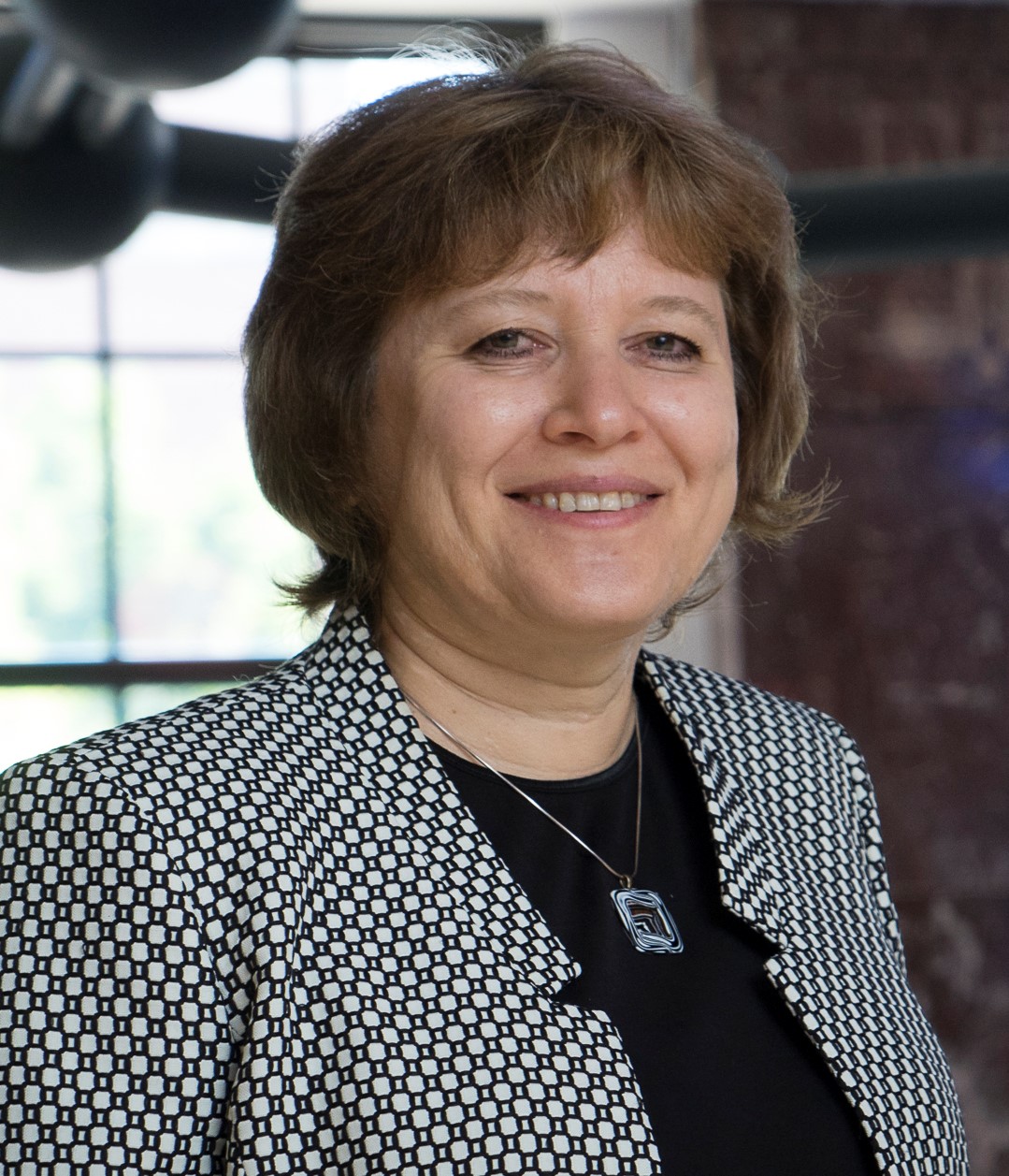


.jpg)
.jpg)

